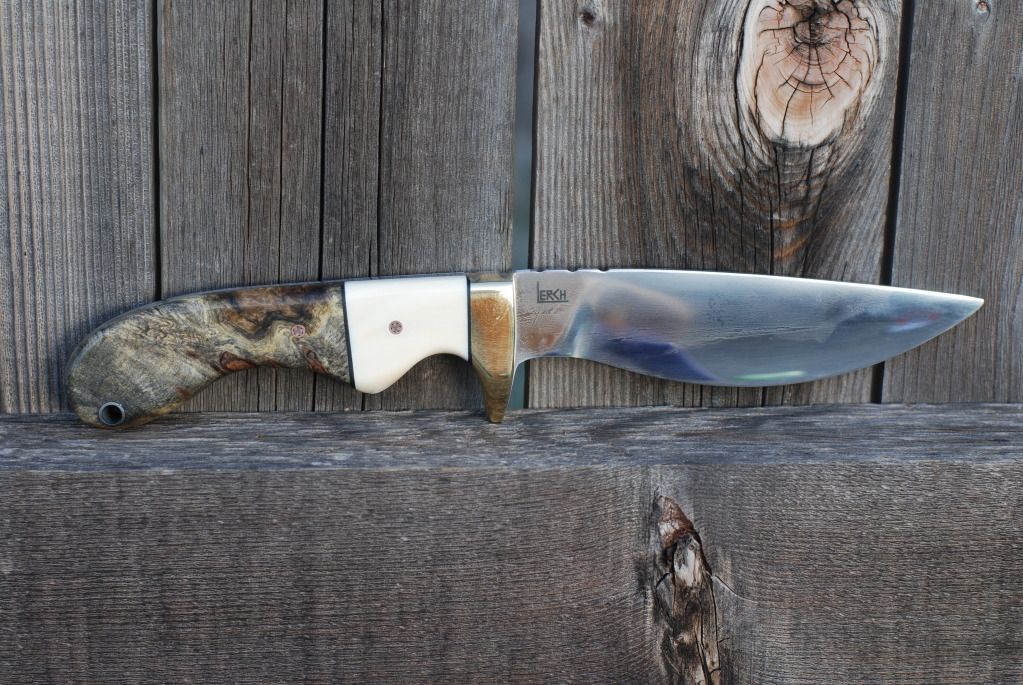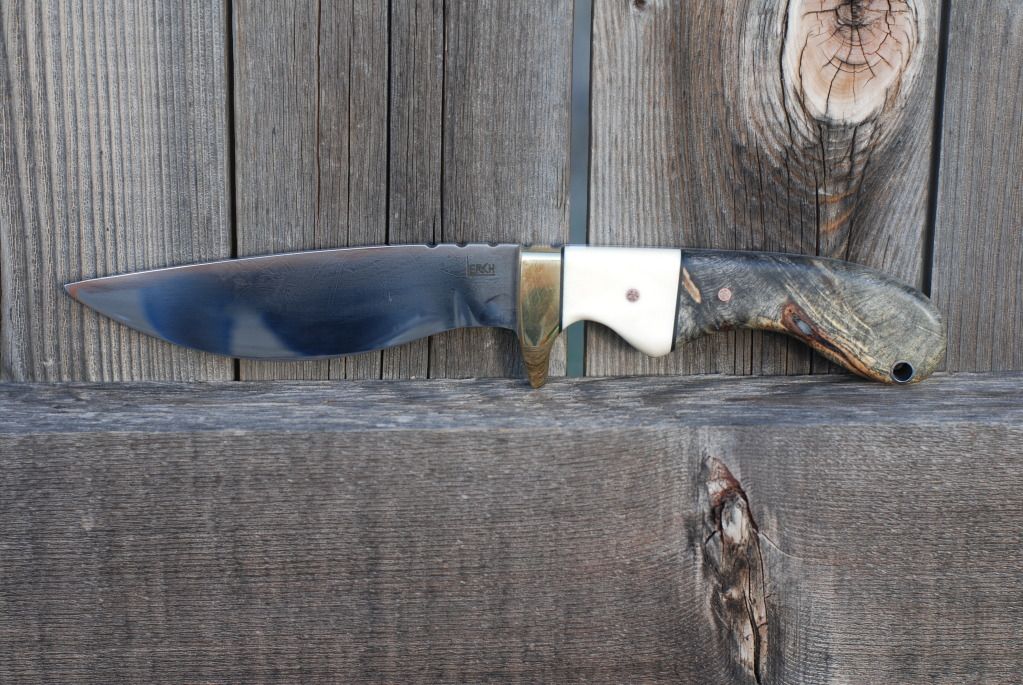My daughter, along with Dad's help and guidance, just finished her first knife last week.
It's a small chefs knife that she wanted to call her own. We decided that Dad would initially profile and HT the blade, and everything else would be a joint effort between the two of us, done with simple hand tools as much as possible.
The fly in the ointment was that she wanted to have a mirror polish. I reminded her that much hand sanding was a lot of labor, and may seem a wasted effort afterwards when it got scratched. Still, she insisted it was her knife and that's what she wanted.
(That's OK, because we got to do some experimenting for the Mobile 1 thread.)
Nevertheless, she is no longer as enamored with the "shiny metal finish" after this ordeal.:3:
The wood she picked out for the scales was a leftover piece of Honduran mahogany from a furniture project I did about 25 years ago.
She didn't pick out any burl or otherwise highly-figured hardwood, which struck me as sorta odd considering the effort spent on the blade. Good thing, because all shaping of the wood was done with rasps, files, and sandpaper; the mahogany worked like a dream.
The finish?
Three thin coats of "superglue", sanding between coats, finalized by a final sanding with 1500 grit. We did cheat a little on the "hand tool only" approach because I let her use a felt wheel on the flexshaft to do a final polish. But she's already familiar with using that, so maybe we didn't cheat too bad.
We'll see how the finish holds up.



